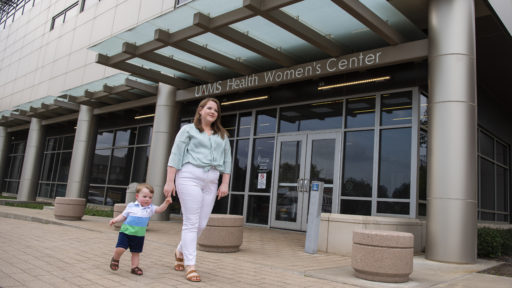Description
Breastfeeding moms who work outside of the home must pump their milk and store it for later use. But where and when can they pump on the job? What about mothers who need to breastfeed in public? What does the law say about that?
Dr. Misty Virmani discusses the labor laws, public protections for nursing mothers, personal best practices for women who need to pump at work and the importance of maintaining your milk supply by pumping while you’re away from your baby.
Video Player
Transcript
There are laws, both in the federal statutes and in most states, that support breastfeeding in the workplace.
In Arkansas, specifically, that states that you can pump during your break times in a clean non-bathroom, non-mop-closet space and to be protected, in terms of your privacy. Pumping in the bathroom is unacceptable. You wouldn’t prepare your lunch in your bathroom. I wouldn’t recommend pumping in a bathroom.
Finding those spaces is hard, and a lot of women have to talk to their employer before they go on their maternity leave to work out a space. Sometimes it’s the break room, and they put a sign out that says, “I’m pumping.” Sometimes it’s using a manager’s office, or if you are lucky enough to have an office space of your own, using that space. A lot of people unfortunately share offices, have offices with windows or have no office whatsoever, in order to be able to pump.
More and more employers are starting to recognize the benefits of supporting breastfeeding moms and are creating lactation stations or lactation rooms within their facilities. Walmart, specifically, has been doing that around the state and around the country, which is great.
As care providers, I encourage all of us to advocate for our patients, write a letter to her workspace saying it’s important to her health, it’s important for her baby’s health, for her to be able to breastfeed. This is kind of along the same vein as advocating for other preventative health measures like not smoking.
So breastfeeding helps prevent long term chronic diseases in both mother and child. It helps them stay in the workforce and in the workplace longer and more effectively and more healthily. It maintains our long-term longitudinal workforce health and disease so that women can stay in the workforce for longer. They need less hospitalization visits, less sick visits. They die less, which is super important. And you don’t have to train a new worker when she is ready to come back to work and can still be supported and breastfeeding.
The research for employers shows that if you have a breastfeeding, supportive practice and policy within your workplace — meaning that your policies support a breastfeeding mom to have the time needed to be able to pump or breastfeed her child directly, and support the space that she needs to be able to do that, and then to store the milk — that 94% of women are more likely to come back to your job than if you don’t. In that case, if you don’t have any breastfeeding supportive practices, only 56% of women go back to work after having a baby when they’re asked, “Is it related to breastfeeding supportive practices?” So it benefits you, because then you don’t have to train a new employee, you get your already trained employee back and she’s healthier, she’s happier and she stays with you for longer. So you have you have benefits to both mom and to the employer by supporting breastfeeding practices.





